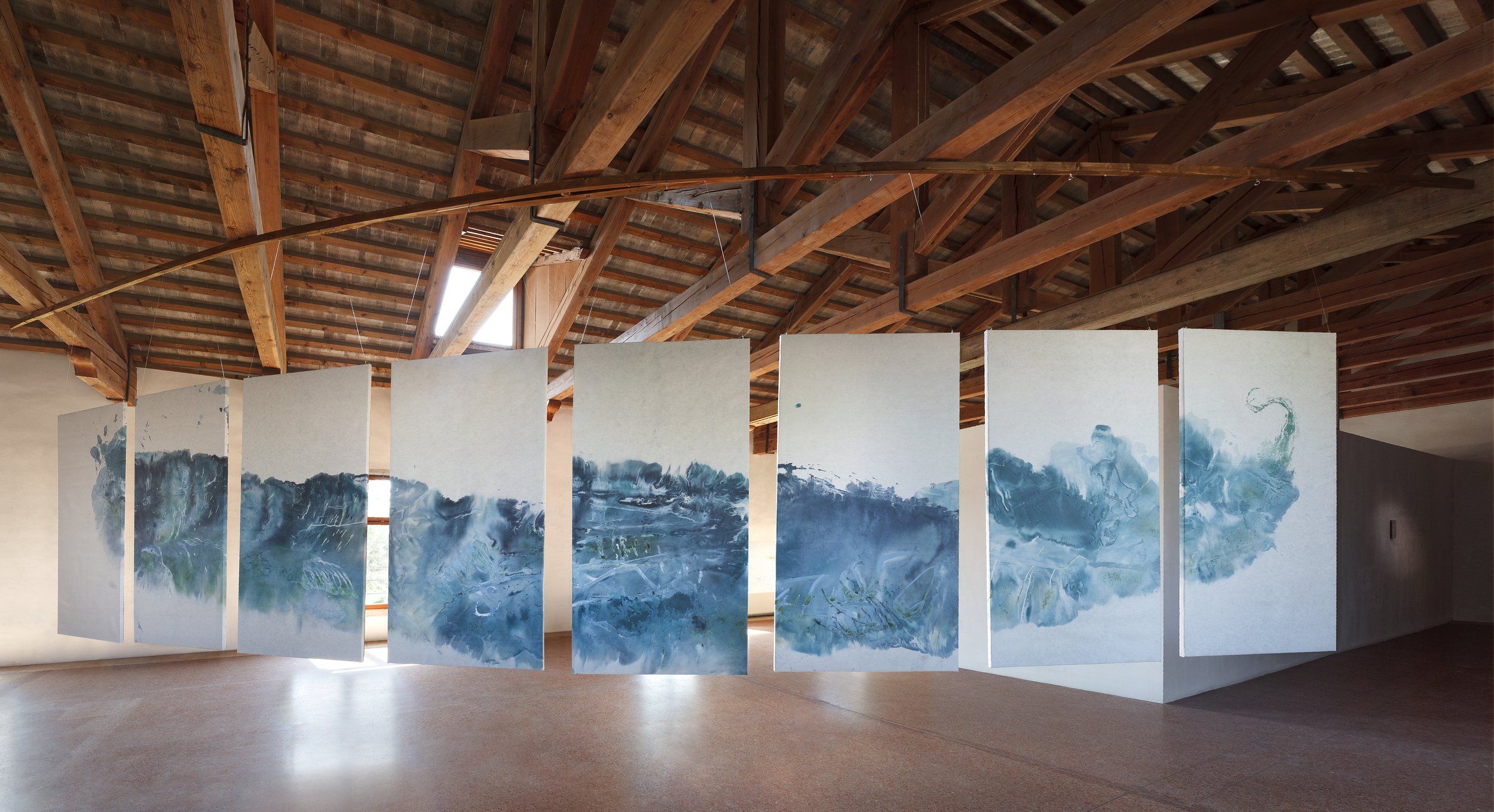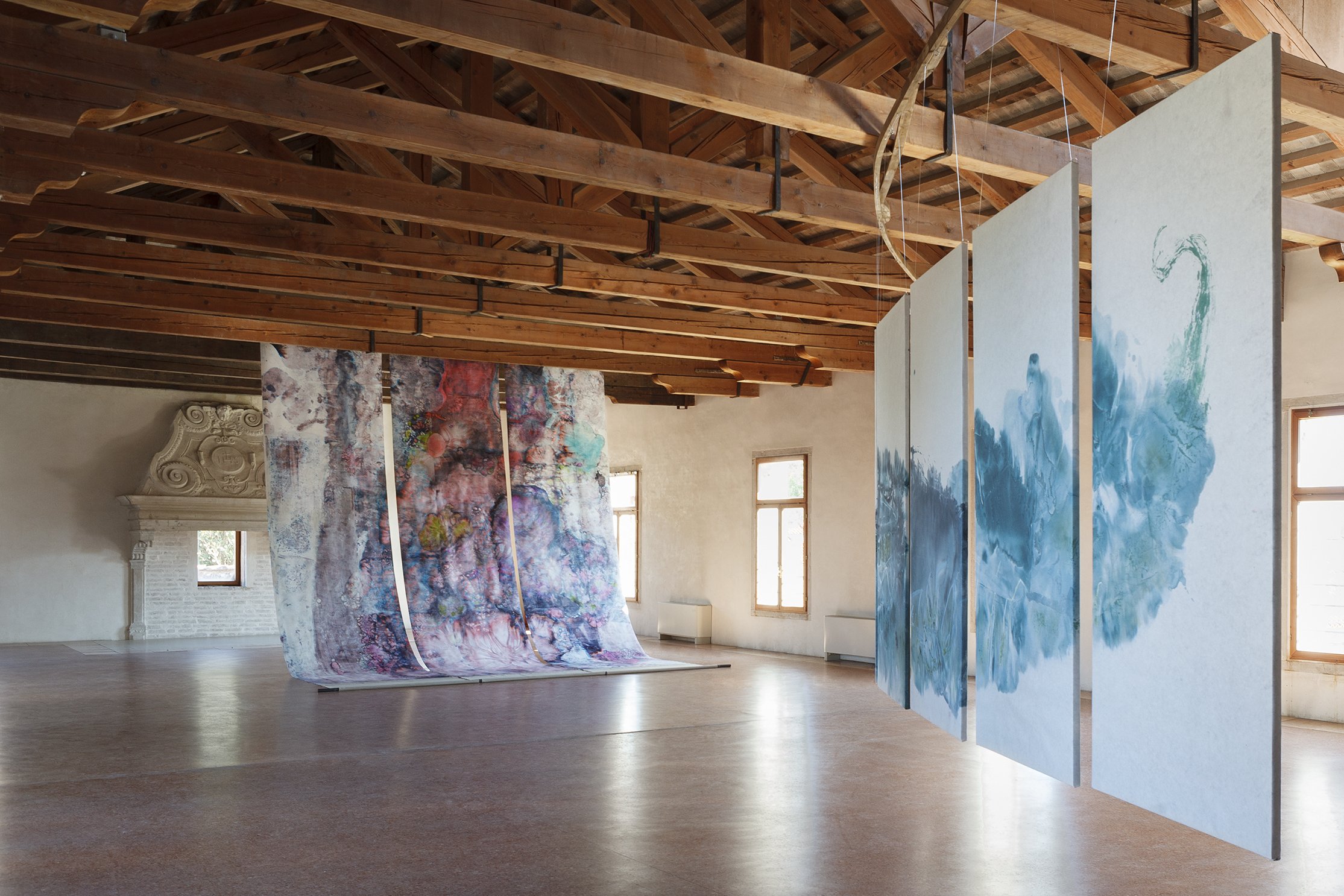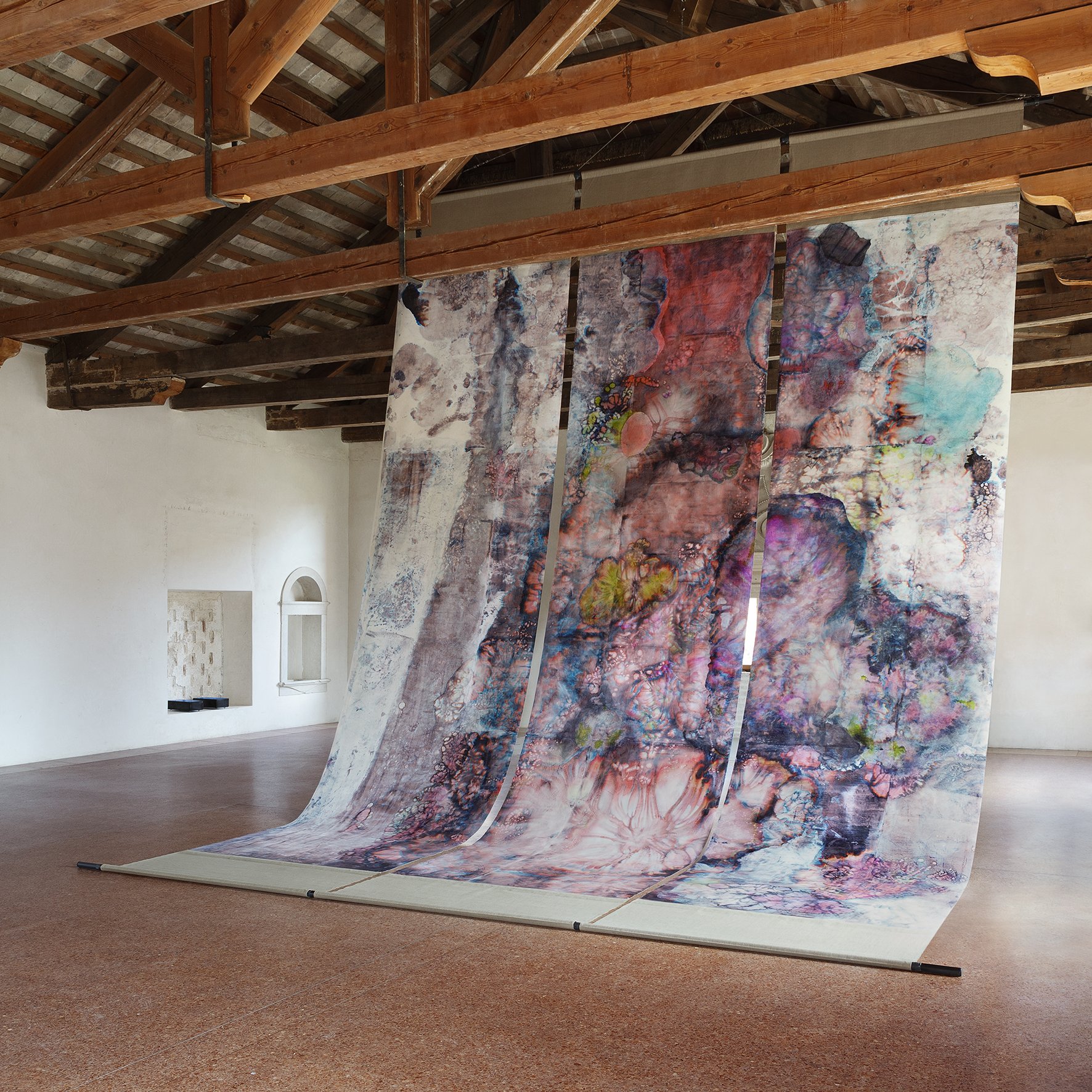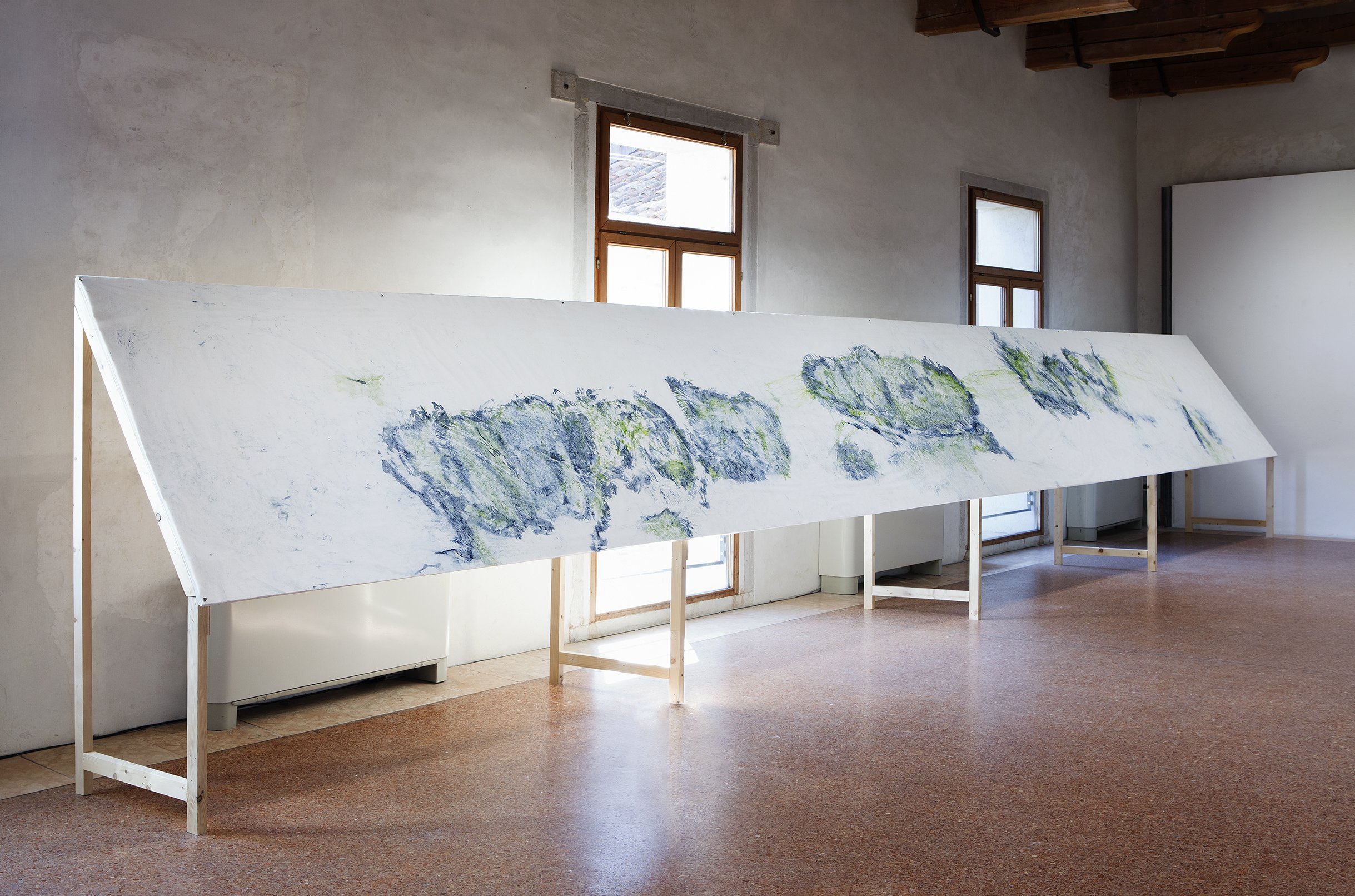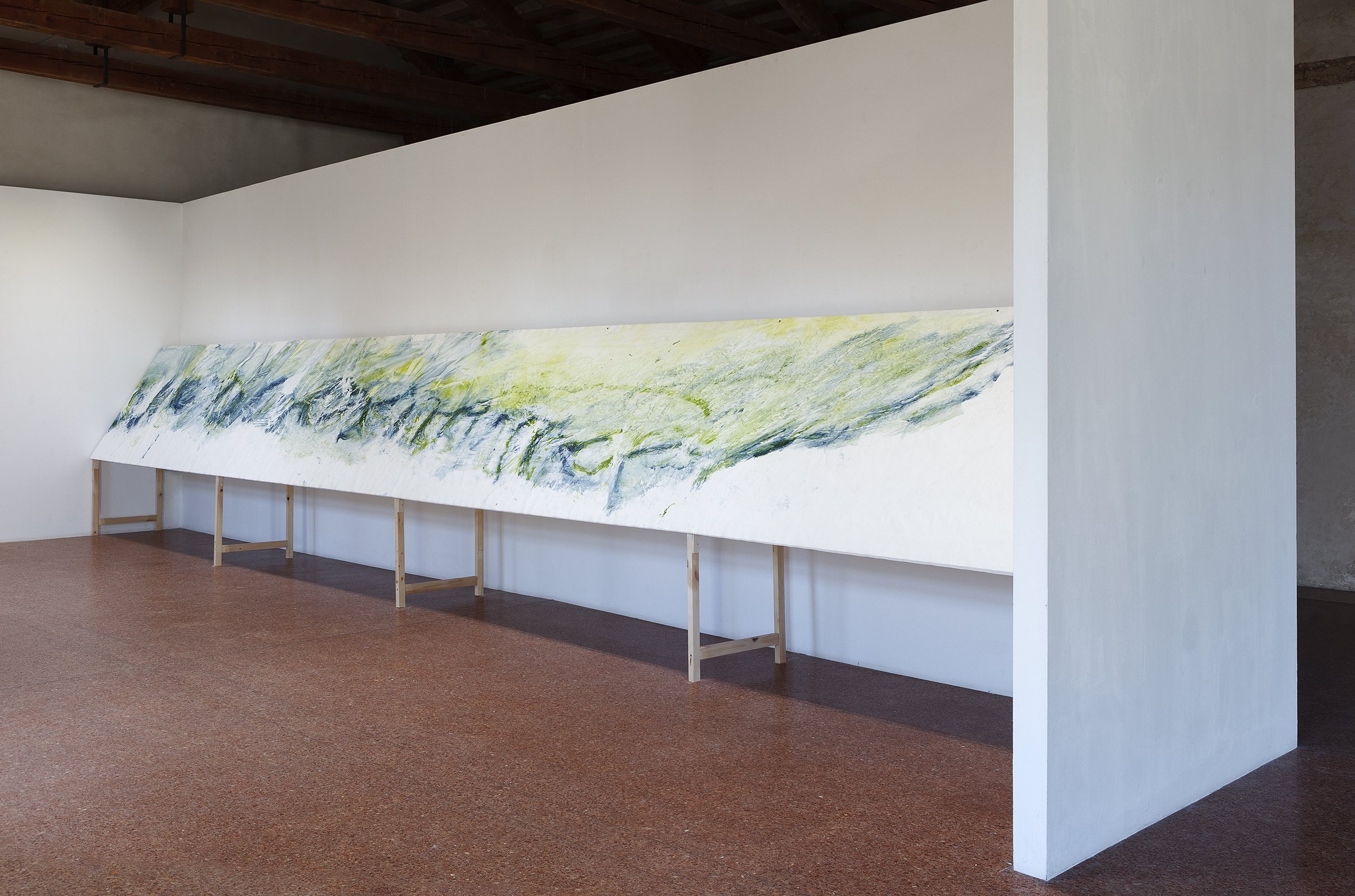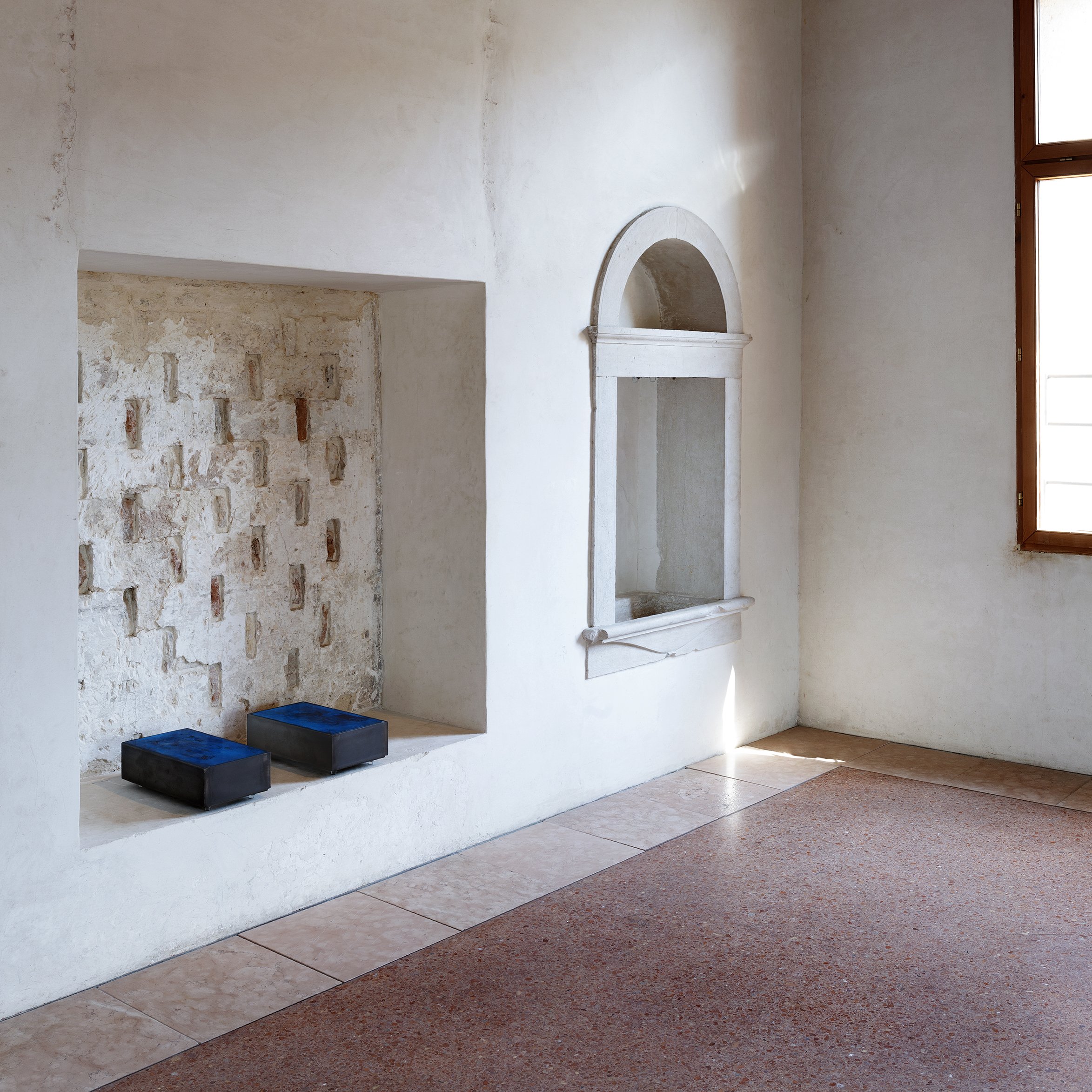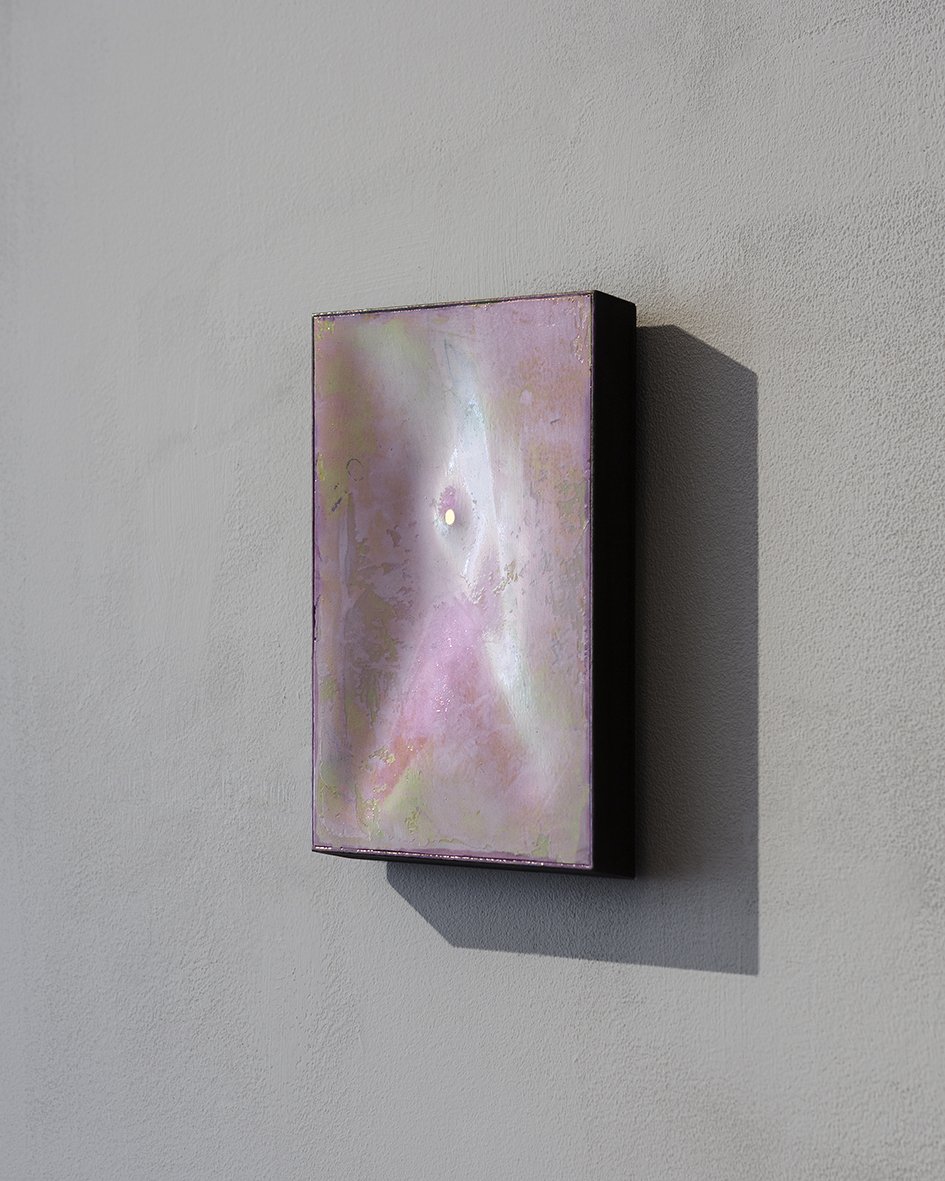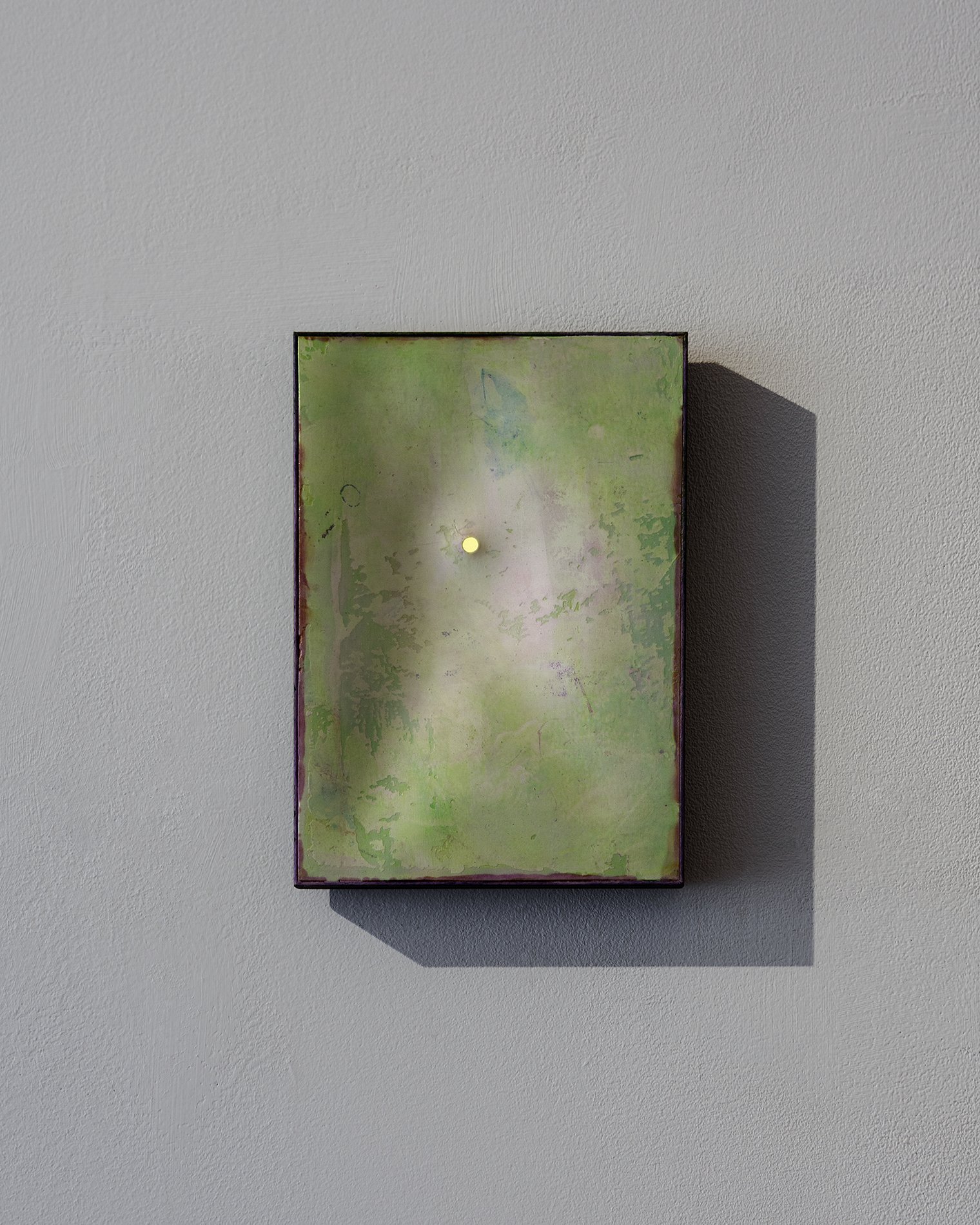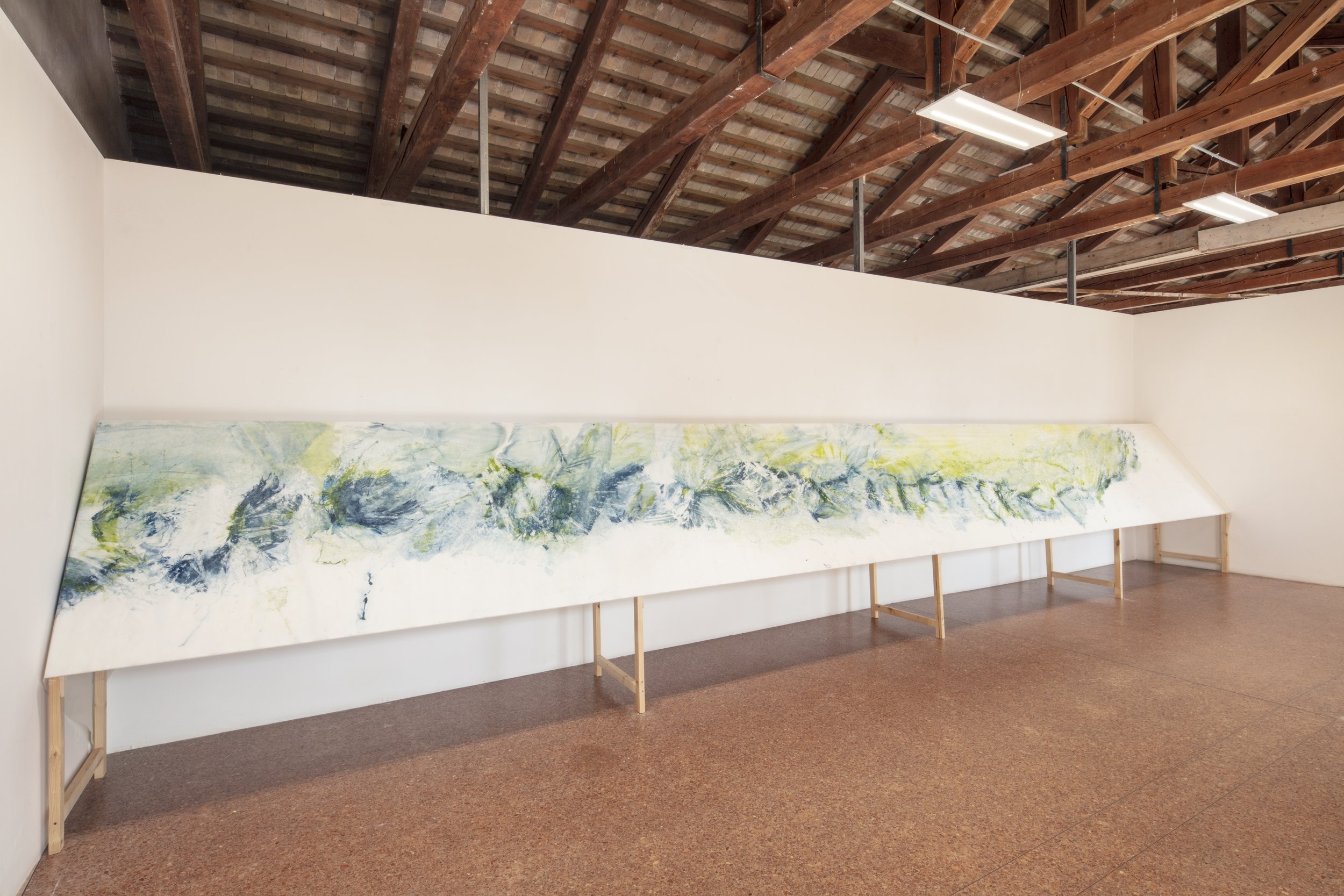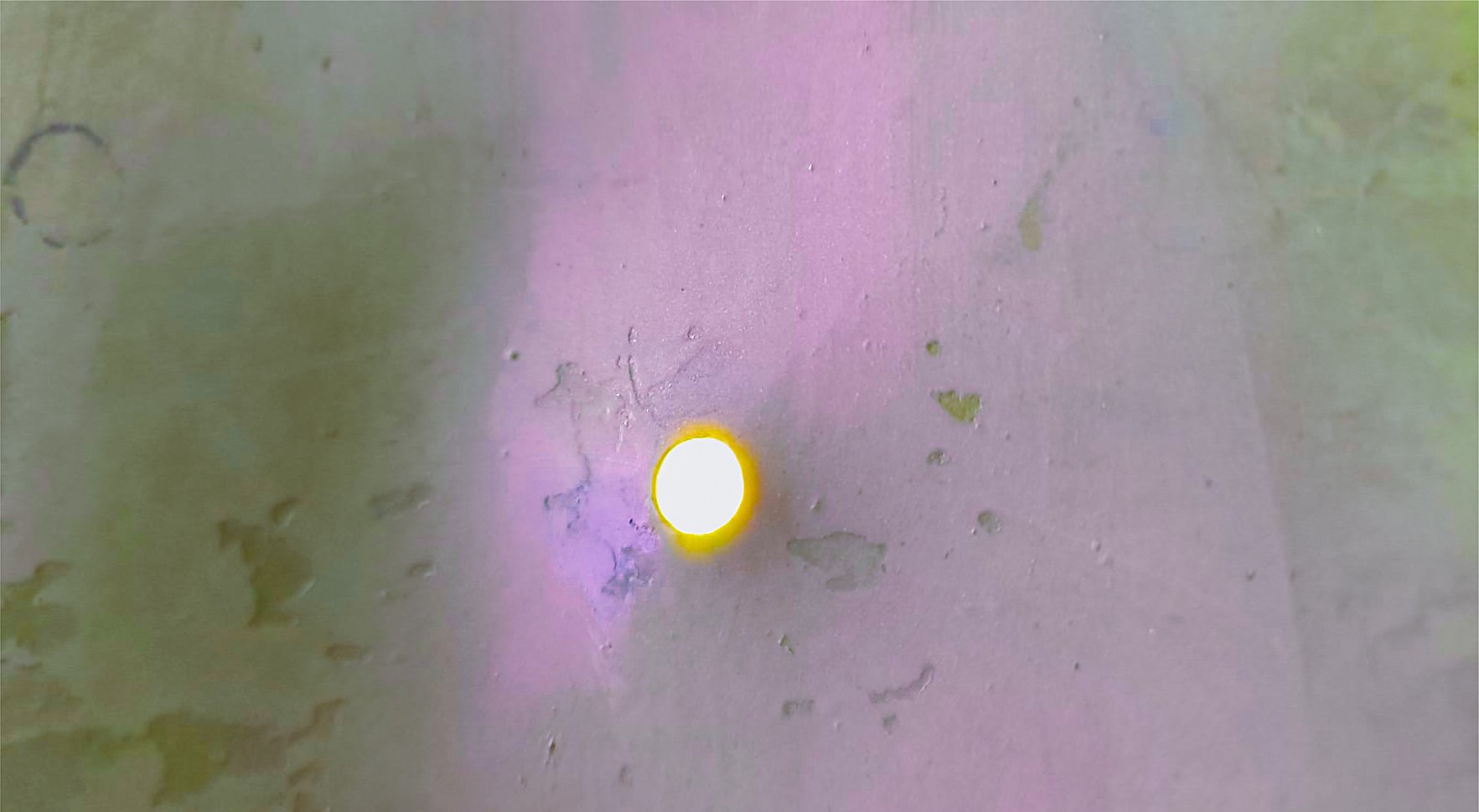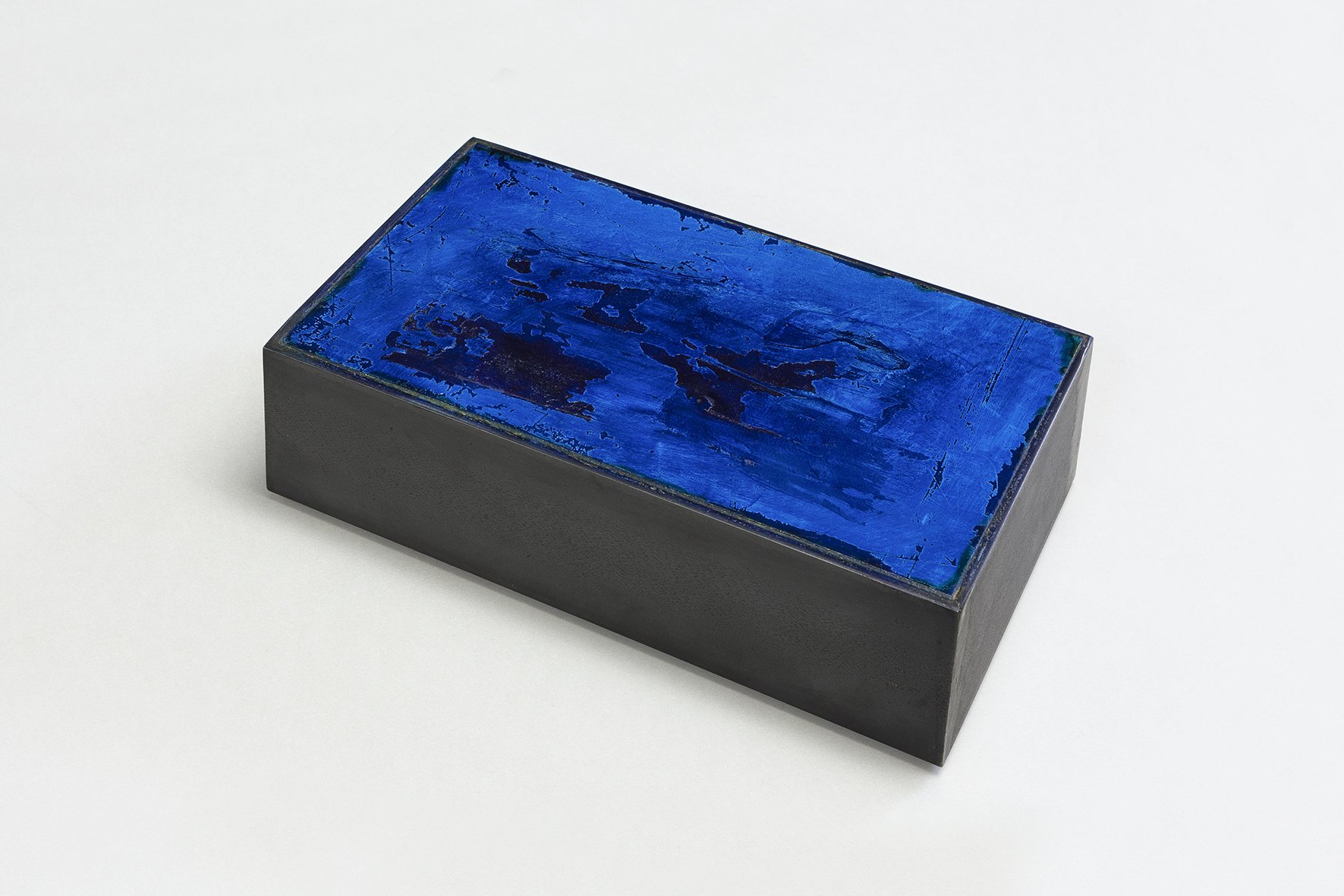BEVILACQUA LA MASA FOUNDATION, Venice
Tinture / Dyes
10/2022 - 12/2022
The exhibition Dyes by Saverio Tonoli is part of the exhibition project How to retain the energy that flows through us. Landscapes set up in 2021 in Palazzetto Tito, at a time when the pandemic had reminded us how much we ewxist within a single great process of life that is grafted onto death, in a biome in continual metamorphosis (Emanuele Coccia) that does not distinguish animals, plants, viruses, human beings and matter.
The question posed to art is how to speak of or make people see or feel that landscape that feeds on the energy that runs through us and all beings in the world. How to stop this energy. Furthermore, in what way can an artwork not be external to this condition, but absorb a process, find its own destiny in a possible contingency, a potential multiplicity.
In Palazzetto Tito, in dark rooms with strongly contrasting lights, each work was born from a recording of sensitive data from nature, therefore from photography to video, from digital images to audio installation, to stabilise processes in continuous transformation, disturbing and destabilising, in the blurring of the gaze.
Now, at Giudecca, a new chapter is opened, a new landscape in a different space, flooded with natural light thanks to the large windows. Saverio Tonoli's works, starting from an approach that is still photographic, that of the ”camera obscura”, from the wet paper that produces impressions of reality, applies with a radical approach different techniques and compounds. Dyes are filled with matter in continuous transformation, starting with frottage on rocks bathed by the sea, moving on to drying and oxidation, as if the artist were searching for alchemic solutions, gathering energy until saturation and then releasing it to visual perception. The installation exploits horizontality and verticality, suspension in the air and the horizontal reading plane, as in the large white structure in the form of a lectern. However, these large layouts allude to observation that cannot be delimited, that cannot be measured by the human eye that sees and its body that moves, thus alluding to a non-anthropocentrically comprehensible process, to a metamorphic sublime (Michael Taussig).
The works, like abstract and material Naturgemalde (Alexander Von Humboldt) in motion, seem to be the imitation of a continuum of symbiotic processes that unfold and flourish towards us and with us. The formlessness induced by the paradigm of horizontality and liquid matter (Rosalind Krauss and Yve Alain Bois) produces an original pictorial space, invasive and enthralling between the phenomenology of chemical and therefore luminous processes, and irradiation.
Having annulled all depth, left to the natural entropy of nature, the works occupy the exhibition hall, as in an excess (Georges Bataille) that cannot be represented, but in which, empathetically, we perceive each element as returned to the air, to the climate of the ecosystem to which, before any thought, we belong.
The open series Self-absorbed on rocks has been painted directly on the sea coast of different countries, recording fragments of the cliff ’s profile and volumes. Two paintings from the series are presented in the exhibition, one painted in Yilan (Taiwan) and the other in Monte Argentario (Italy).
Halfway between a tapestry and a scroll, the monumental Smallest Worlds has been conceived specifically for the present exhibition; inspired by the observations made by Hubble, who first looked into the darkest corners of the sky, it has been painted with inks that, mixed with certain solvents, break down their pigments into aberrant colours and oxidise over time, turning towards a reddish hue. The painting also contains red eosin dye, which, by contrast, has a tendency to turn into a fluorescent green.
The painting Azoth is freely inspired by archival images of astronomical events. Azoth is a specific nebula which, due to its dubious nature, presents a unique combination of colors. The division into panels suggests, almost cinematically, a passage in time that has taken place and was not recorded.
As result of the investigation on the fresco wall painting, the Frescos fuse traditional techniques with an experimental approach, both in the use of ink and pigments as well as in their finish.
Stefano Coletto


